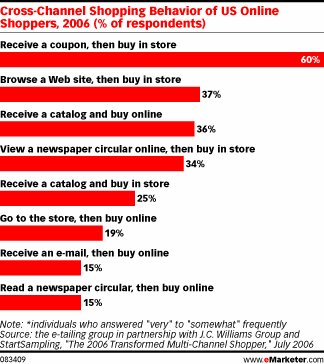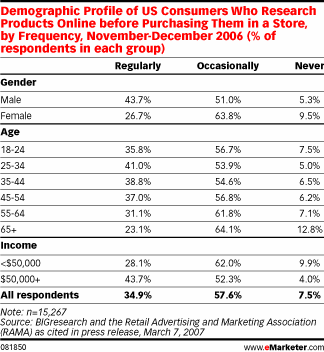These results line up with other studies about how online shopping affects offline purchases.
"The Multi-Channel Shopping Transformation Study," conducted in 2006 by the e-tailing group with J.C. Williams Group and StartSampling, measured the pervasiveness of different cross-channel shopping behaviors. The most-trod cross-channel shopping path starting online (i.e., from a Web site, e-mail or an online newspaper circular) was to browse a Web site and then buy in a store (37%).

eMarketer Senior Analyst Jeffrey Grau said, "Internet-influenced store sales are greater than online sales. And it is also likely that the gap will widen as Internet-influenced sales increase at a faster rate than online sales."
The propensity to research online prior to purchasing in a store is to some degree a function of consumer demographics. Men are much more likely than women to regularly shop this way (44% vs. 27%, respectively). Among age groups, those ages 25 to 34 are the most avid cross-channel shoppers (41%), while those ages 55 to 64 (31%) and 65 and older (23%) demonstrate the least interest. Consumers with annual incomes of at least $50,000 (44%) are more likely to shop in this manner than consumers who have lower incomes (28%).






